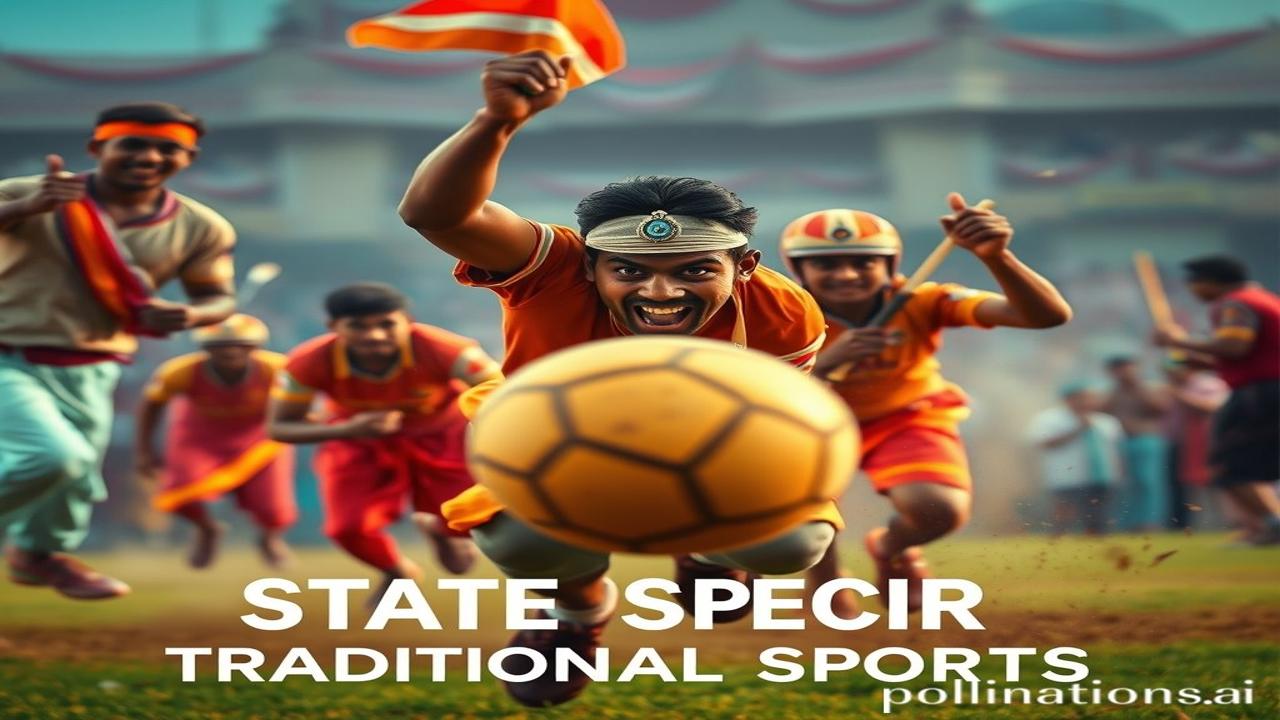Mitti Ki Khushboo, Veeron Ki Dhool: Unearthing India’s State-Specific Traditional Sports
Kabhi socha hai, doston, ki cricket aur football ke shor-gul mein, hamare desh ki mitti mein kuch aur bhi goonjta hai? Waqt ki dhool mein dabi kuch aisi kahaniyan hain, jismein veerta hai, kala hai, aur hai hamare desh ki atoot dharohar. Aaj hum baat karenge un state-specific traditional sports ki, jo shayad headlines mein na aate hon, lekin jinke har ek khel mein Hindustan ki ruh basti hai.
Rooted in Time: The History of Indigenous Games
What are these state-specific traditional sports, you ask? Well, imagine games born from necessity, survival, and celebration. These aren’t just pastimes; they are reflections of a region’s history, geography, and cultural values. Think of the martial art forms of Manipur (Thang-Ta) or Kerala (Kalaripayattu), the bull-taming sport of Tamil Nadu (Jallikattu), or the boat races of Kerala (Vallam Kali).
These games often originated centuries ago, evolving from practical skills needed for hunting, defense, or agriculture. They were not just about physical prowess, but also about strategy, teamwork, and respect for nature. For example, Kalaripayattu, dating back to the 3rd century BCE, wasn’t just about fighting; it involved healing practices, meditation, and a deep understanding of the body. Jallikattu, on the other hand, was historically a test of courage and manhood for young warriors in Tamil Nadu, intrinsically linked to the Pongal harvest festival.
Zameeni Sach: People and their Games
Imagine a young Manipuri warrior, his muscles coiled tight, practicing Thang-Ta under the watchful eyes of his guru. The sun beats down on his brow as he flawlessly executes sword and spear techniques, each move a dance of power and precision. Picture a Keralite farmer, strong and tanned, preparing his bull for the Jallikattu arena. The air is thick with anticipation, the drums beat a frantic rhythm, and the crowd roars as he bravely faces the beast.
Think about the vibrant Vallam Kali festivals of Kerala. Ma Rukmini ne aaj naye kapde pehne, kyunki mandir mein utsav tha, aur phir woh nadi ke kinare gayi, jahan usne dekha ki dhoop mein chamakte huye lambe-lambe boats taiyar ho rahe hain. The paddlers, their faces etched with determination, chant rhythmic songs as they slice through the water, their synchronized movements a symphony of strength and unity.
These weren’t just games; they were integral to the fabric of society. Rulers used them to train soldiers, artisans to showcase their skills in crafting equipment, and farmers to celebrate a bountiful harvest. Dreams were woven into these games, hopes were raised with every victory, and fears were faced with every challenge.
Dharohar aur Pehchan: Echoes of the Past in the Present
Today, these traditional sports are more than just games; they are a vital part of our cultural identity. They connect us to our roots, reminding us of the resilience, ingenuity, and spirit of our ancestors. We see their presence in the rituals, art, festivals, and even the language of different regions. The resurgence of interest in these games is a powerful statement about the importance of preserving our Bharatiya culture.
Jallikattu, for instance, was fiercely defended by the people of Tamil Nadu when faced with legal challenges, showcasing the deep cultural significance of the sport. Similarly, efforts are being made to promote Kalaripayattu and Thang-Ta globally, recognizing their value as unique martial art forms and cultural treasures. Yeh sab hamari pehchan hai, hamara garv hai.
Mazedar Tathya aur Bhram-Bhanjak: Facts and Fiction
Log samajhte hain ki these games are outdated or irrelevant in today’s world, lekin asli sach yeh hai ki they offer invaluable lessons in discipline, teamwork, and respect for tradition.
Here’s a fun fact: Kalaripayattu is considered to be one of the oldest martial arts in the world, influencing many other fighting styles, including Kung Fu!
Drishya aur Bhavnayein: A Sensory Tapestry
The air smells of earth and sweat. The temple walls feel cool and smooth under your hand. The sounds of drums and chanting echo in the streets. The sight of athletes pushing their bodies to the limit is exhilarating. The taste of victory is sweet, the sting of defeat is a reminder to try harder. These games are not just about winning or losing; they are about the experience, the connection to our past, and the celebration of our culture.
Antim Vichar: A Legacy of Strength
“Utho, jago aur tab tak mat ruko jab tak lakshya prapt na ho jaye.” – Swami Vivekananda’s powerful words remind us that the spirit of these traditional sports, the determination, the resilience, the unwavering belief in oneself, is a legacy we must carry forward. These games are not just about the past; they are about the future. They are about preserving our cultural identity and inspiring the next generation to embrace their roots.
